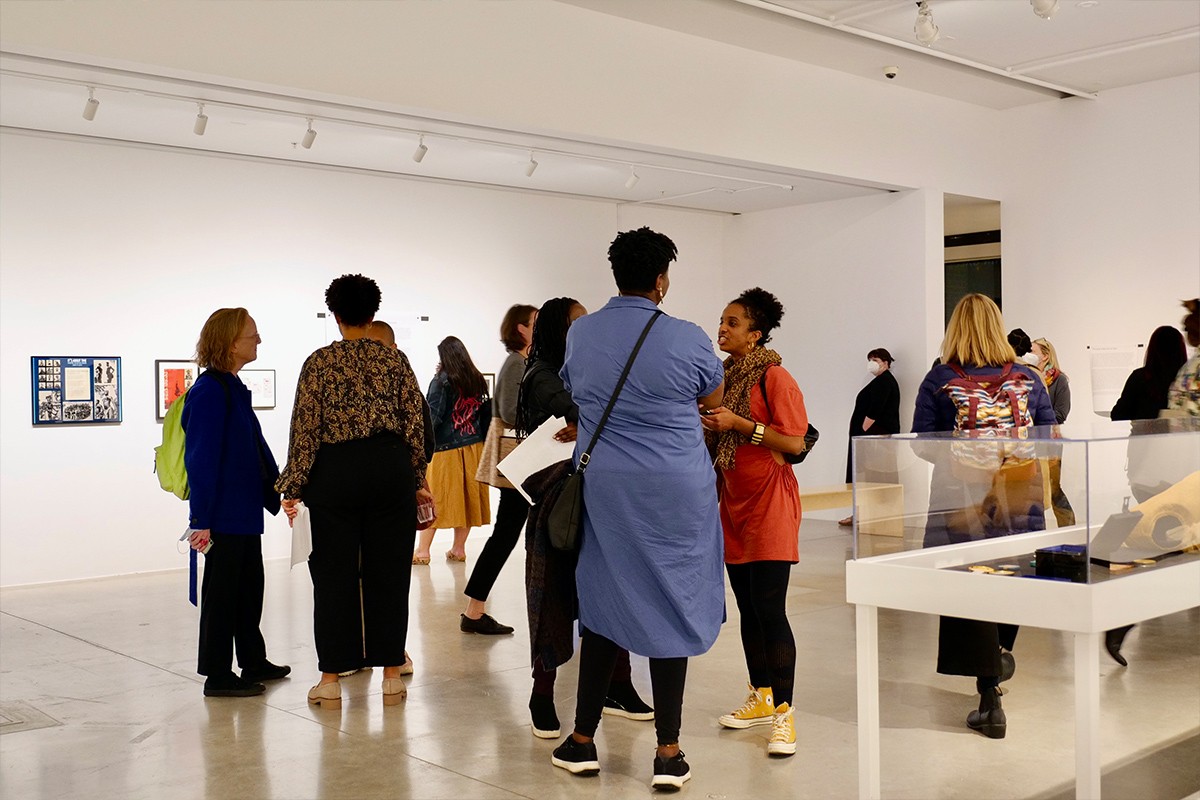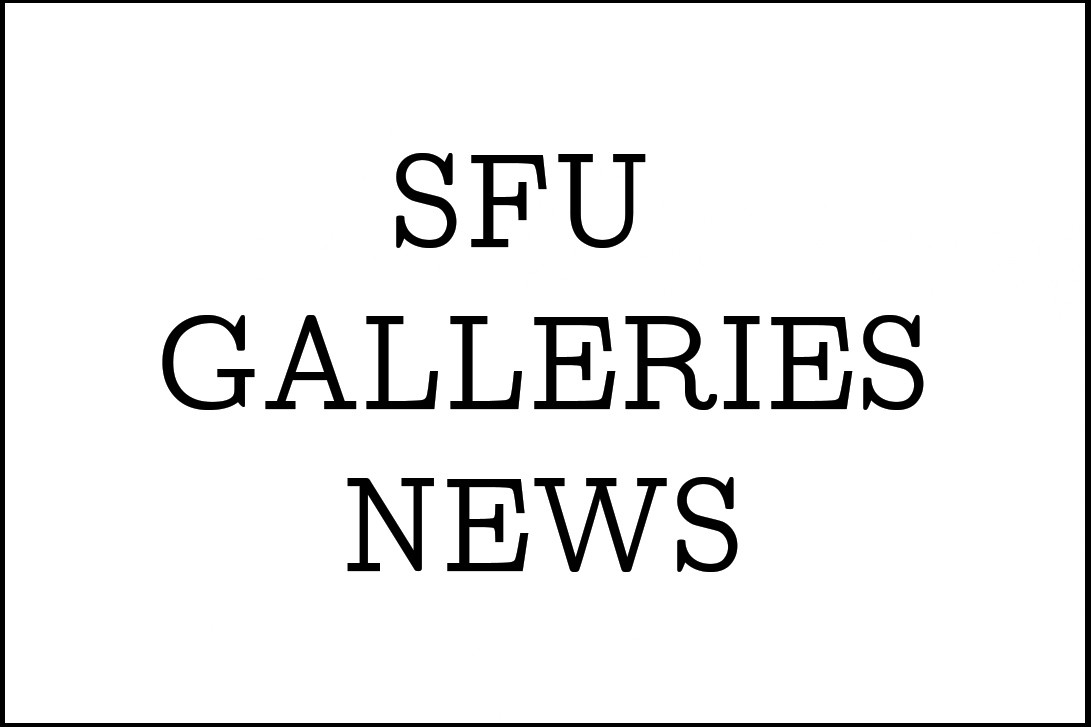Conservationists remove Charles Comfort's British Columbia Pageant, 1951, from the SFU Academic Quadrangle, 2019. Photo: Christina Hedlund.
Charles Comfort Mural Removal
Beginning June 17, 2019, Charles Comfort's 19-metre long mural, British Columbia Pageant (1951), will be removed from its current location in SFU's Academic Quadrangle (AQ) where it has been installed since 2004. Charles Comfort (1900-1994) was a Canadian artist who was especially active in the 1930s and 1940s. He developed a reputation as a painter of murals, producing panoramic paintings and carved friezes for the Arts & Letters Club in Toronto, the Toronto Stock Exchange and Central Station in Montréal. The process of its removal will take approximately 10 days. The mural will be stored at SFU.
The mural was originally commissioned by Toronto Dominion (TD) Bank for a downtown Vancouver branch, and was gifted to SFU by Toronto Dominion Bank in 2003. The relationship between the bank, capitalism and representation pushes us to consider the role of art within education institutions, raising questions of institutional power, responsibility and colonial investment. The Comfort mural has been criticized for its representation of Canadian history in its portrayal of European settlers and industrialists colonizing the lands now called British Columbia. It presents Indigenous people as decorative, using symbols drawn from First Nations' cultures to frame the contents of the mural, and it excludes non-European settler populations and contributions made by women to the development of the province. Vancouver-based artist Dana Claxton has noted the subjectivity that the mural foregrounds:
If we read this image from left to right, it begins with a crude image of a Northwest Coast totem figure, thereby possibly situating an Indigenous presence. As we move right to the end of the image, the entire mural is flanked with Northwest Coast Indigenous visuality ... On the bottom edge of the mural there is a staggering of these images that almost support the colonial machine, perhaps suggesting that commerce and capitalism that the mural depicts is a result of Indigenous foundations and land, water and air ... It is almost certain that [Indigenous artists] would have depicted a much different British Columbia Pageant. Keep in mind that the Indian Act criminalized Northwest Coast communities from "appearing in any public dance, show, exhibition, stampede or pageant wearing traditional regalia." At the time that this was painted, it was against the law for Indian people to wear this kind of traditional regalia in public. [1]
There were immediate protests across the university in response to the mural's installation, which have continued ever since. The Cedar Table Series Anti-colonial Art Contest (November 2004 - February 2005), co-organized by the Simon Fraser Student Society and the First Nations Student Society, was an effort to bring forward representations of what is missing in British Columbia Pageant by reflecting the settler colonial foundations of the province. The winning sculpture, Nate Woodbury's Teen BC (2005), is now located in the AQ opposite the mural. The piece compares the rhetorical and social glue that bound a newly colonized BC, and presents bullets, the church, wood, and the railway as elements missing from Comfort's depiction. One of the runners up is also installed across from the Comfort mural, entitled Civilization is a Crime Scene (2005) by A.S. Matta. Both works were gifted to SFU's Art Collection by SFU's Anti-Colonialism Society in 2005. Over the last decade and half, additional works from the SFU Art Collection that approach questions of Indigenous identity and politics by artists Marianne Nicolson, Bill Reid and Edgar Heap of Birds have been installed in proximity to the mural as critical and representational interventions.
Linking these longstanding and ongoing efforts to more recent university-wide efforts to engage with recommendations from the Truth and Reconciliation Commission's Calls to Action, which were first published in 2015, SFU Galleries has organized renewed discussions around the mural. In March 2017, William Lindsay, then Director of the SFU Office for Aboriginal Peoples, presented a lecture where he discussed the mural and other colonial works in the SFU Art Collection. Lindsay noted the opposing opinions at SFU on whether it should be removed altogether given the ongoing harm it causes to Indigenous people. Lindsay queried SFU's responsibility to such a work at a time of reconciliation and called for its removal. In March 2018, SFU Galleries organized a panel entitled Why Art Matters: Art, SFU and Aboriginal Reconciliation. The panel brought together artist Dana Claxton and art historians/curators Richard William Hill and John O'Brian, and focused on the Comfort mural within a context of reconciliation and within art history. How does art's complex thinking support our changing landscape and the representation of Indigenous culture? In the context of a pedegogical instiution, what is art's role?
In September 2017, SFU released a report by the SFU Aboriginal Reconciliation Council entitled Walk This Path With Us that specifically called for the removal of the mural.
One specific point raised by Indigenous students throughout the consultation process is the matter of insensitive colonial art installations such as the Charles Comfort mural in the Academic Quadrangle. It is possible that the mural has historic value, and in fact can teach us something about colonial (and racist and sexist) attitudes in BC in the mid-20th century. However, it portrays BC history as starting with European explorers and colonists, downplays many millennia of diverse Indigenous cultures, and contains inaccuracies in the portrayal of Indigenous people and their material culture. Ideally, we would find a new home for it. At the very least, there should be interpretive signs that discuss these issues, or we could create some kind of interactive media that allow people to comment on it. The unfortunate fact remains that the mural continues to cause harm to the Indigenous population at SFU. Currently, there is a standard acknowledgement that degrading depictions of women will not be tolerated at SFU campus; the Comfort mural should be viewed in the same light. While it might be possible to turn the artwork into a learning opportunity, given the difficulties posed in the past, ARC members feel little hope for the potential efficacy of this approach. [2]
Shortly after the report was released, a group formed to focus on art at SFU within a process of reconcilitation and identified three priorities following the Walk This Path With Us report: the implementation of report recommendations to remove the Charles Comfort mural in light of this critical history; the development of a process and policy for the inclusion of Indigenous art in all new SFU buildings and building renewals; and a reconsideration and subsequent rehanging of art of the north AQ, which is where the mural is currently located.
As the removal occurs, students, staff, faculty and the public are encouraged to organize responses.
The Aboriginal Reconciliation Committee Art Cluster is:
Dorothy Christian (Associate Director, Indigenous Initiatives)
Karrmen Crey (Assistant Professor, School of Communications)
Sophie McCall (Associate Professor, English)
Bryan Myles (Associate Director, Bill Reid Centre for Northwest Coast Studies, INS graduate student)
Melanie O'Brian (Director, SFU Galleries)
Deanna Reder (Chair and Associate Professor, First Nations Studies)
June Scudeler (Assistant Professor, First Nations Studies)
Elizabeth Starr (Campus Planning, Development Planner)
cheyanne turions, (Curator, SFU Galleries)
[1] Dana Claxton transcribed from Why Art Matters: Art, SFU and Aboriginal Reconciliation, Mar 29, 2018
https://www.sfu.ca/galleries/SFUGalleriesEvents/2018/Panel-Why-Art-Matters.html (accessed Apr 17, 2019)
[2] Walk This Path With Us. Report. Aboriginal Reconciliation Council, Simon Fraser University. 21.
https://www.sfu.ca/content/dam/sfu/reconciliation/SFU-ARC%20Walk%20This%20Path%20With%20Us_Full%20Report_Sept5.pdf (accessed Apr 17, 2019)

